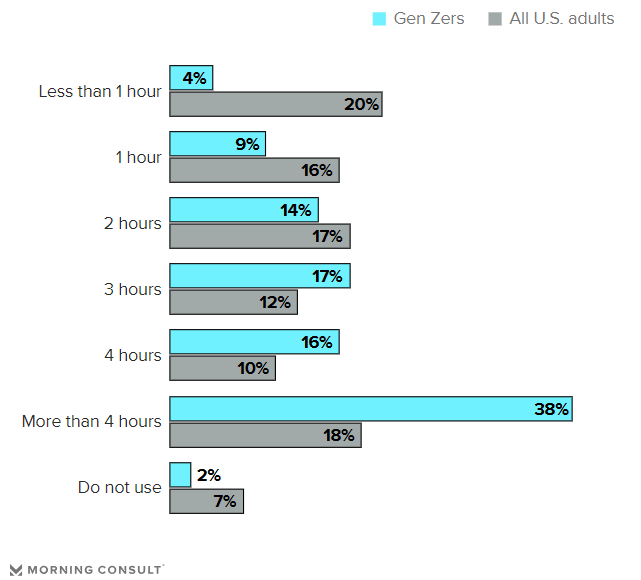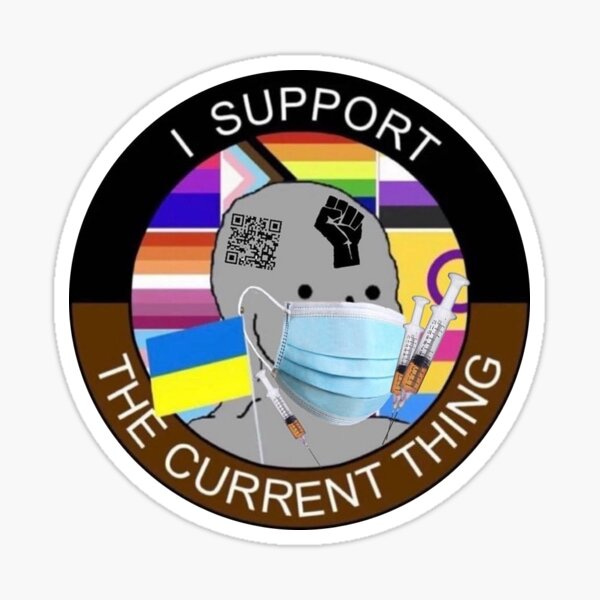Introduction
As our lives move further and further online, meaningful in-person interaction is being replaced with a digital counterfeit where truth is increasingly less relevant and saying the wrong thing can get you kicked out of the party. And while the internet age has undoubtedly brought us historic advancements in terms of access to information, it has also been accompanied by a sort of disconnectedness from reality.
For Gen Z, who has largely grown up “living online,” we have already begun to observe fallout in the form of rising depression and anxiety rates, shortened attention spans, and increased loneliness. Even toddlers are falling prey to the effects of screen addiction.
It is becoming increasingly clear that we are in the early phases of a social experiment that will completely change the trajectory of humanity, and at its core is a replacement of personal human contact with a junk food version that is both much lower investment and much higher risk for its users.
Some Data
First, it’s important to recognize the problem. A survey conducted by Morning Consult in November 2022 of 1,000 Americans between 13 and 25 showed that 54% spent 4 or more hours on social media per day. That’s at least 1456 hours a year of time just spent on social media, not factoring in other screen time. The most popular place for boys was YouTube (used by 93%), and for girls, Instagram (used by 80%). Compare this to just 13 years ago, when a survey of American high school students showed that only 63% were using social media on a daily basis.
What’s The Problem?
Ok. So what? Kids are spending too much time on their phones. Parents have been lamenting that since before social media existed. What’s the problem? In the 2020 documentary The Social Dilemma, we got a glimpse into what goes into the backend of these sites and how they are engineered to keep us on the platform as long as possible, viewing us as the ultimate product. Our attention is one of our most precious assets, and we are handing it over unwittingly day in and day out to apps designed to exploit our psychology, manipulating our proclivity for connection, for novelty, and for comparison. It would be bad enough if we were talking about adults wasting their lives scrolling; but with kids being groomed into tech addiction on a massive scale while their brains are still developing, the effects are certain to be dramatic.
Of all the ways that social media has changed the way we relate to one another, there are two main qualities that characterize the risk that is facing our youngest generations.
Low Investment
The name of the game in the age of the internet is speed and in order to achieve high speed communication, the quality of the interactions suffers. Social media sites like Twitter and Instagram are low investment forms of communication where you can instantly let the world know what you think about anything. This is super convenient for live updates on a football game, a developing emergency situation, or posting a picture of a night out with friends. It’s absolutely terrible for discussing complex, nuanced issues.
(Not exactly related, but a pretty hilarious example of internet arguments.)
When two people who know each other have a conversation, their past relationship acts as a backdrop, and they are, generally speaking, assuming the best about each other’s intentions. Interactions on social media between people who don’t know each other afford none of that sort of charity. And some of this is just baked in. People don’t have much reason to assume the best about others online when the content boosted by algorithms depicts a world on fire and factors like tone of voice and body language are stripped from the equation.
When kids spend a large chunk of their day in these environments, they are effectively being taught about life (both how the world works and how it is acceptable to act). The problem is that the way you can act online is fundamentally different from how things work in the real world. Sure, you can make real and meaningful friendships online that transition into real life and last a lifetime. But I would argue that this is the exception and not the rule. TV shows from the early days of social media, like Catfish on MTV, illustrated how people in online communities can portray an image that is completely different from reality. This naturally leads to the distrust we experience when interacting with others online.
It also takes much less effort to maintain relationships online. Nowadays, in the metaverse, you can play games, watch movies, and talk about life with strangers, logging off whenever things get dull. Meanwhile, we all know how messy and difficult IRL relationships can be. The more time young people spend in these instant gratification environments, the more instinctive it will be to retreat to them when the discomfort of real life rears its head.
Finally, it’s way too easy to say something hateful online without bearing the consequences of your actions. And because there’s a disconnection from the personhood of the avatar arguing with you on your smartphone, it’s easy to assume the worst and get into tribal mode, viewing things from an “us” and “them” perspective.
High-Stakes
Posting online is also incredibly high-stakes in the 2020s. Kids are now growing up with the risk that if they tweet the wrong thing or post the wrong picture, their lives could be ruined. This sort of problem simply didn’t exist 20 years ago. The morals of the moment are constantly in flux, and an opinion or a joke expressed carelessly in 2017 may warrant social exile in 2023. This is the type of pressure celebrities have long been familiar with, but now 16-year-old Jessica Smith has to walk on eggshells to make sure not to offend one of the billions of people online.
Social media also allows for much greater reach than ever before. A popular post can easily be seen millions of times, which is great for businesses and celebrities looking to market themselves. However, this is a double-edged sword. When the scope of a conversation is expanded to include millions of people, nuance is sacrificed to avoid offending the most fragile among us, and almost all of the trust and context that frame an IRL conversation are gone. Nuanced arguments are immediately straw-manned into caricatures on both sides of a discussion, and people are silenced by mobs or by tech companies with their thumbs on the scales.
This sort of environment has the effect of teaching young people to go with the crowd, accepting “the current thing” instead of thinking critically and engaging in discussions. Of all the negative externalities of younger generations growing up in these environments, this is the worst. People who don’t fit into the range of acceptable views are often pushed out to the fringes of the internet, where they are only introduced to other broken people and even more extreme ideas. To have an entire generation that is afraid to speak out, think for themselves, and make mistakes will have a catastrophic effect on the future of the western world. In societies that have historically championed free speech and free expression, the very tools we now have to exercise those freedoms are being used to shape and control our voices.
Conclusion
Real relationships are messy and require patience and hard work to maintain. Meanwhile, practically everything online can be had in an instant and is much more stimulating in the short term. Your girlfriend made you mad? Watch porn. You don’t want to do your homework, spend 5 hours on YouTube watching top 10 list videos. It’s very difficult to convince a kid why he should do that hard, boring thing when the super fun thing is where all his friends are.
That said, I’m not really for making people do things. Besides, in this case, I don’t think it would move the needle too much. What I do believe is that if we don’t find a way to shift the culture of Gen Z and future generations away from life online with a more compelling story, we’re in for a future of tech-addicted, anxious, and depressed adults who are deathly afraid of going against the grain (except when it comes to superficial “non-offensive” characteristics like dyeing their hair, getting tattoos, or adopting a strange gender identity).
It’s a tough balance to strike as a lot of daily life has already been shifted online, and work for most of us involves the internet. For that reason, it’s absolutely crucial that we begin to consciously prioritize screen-less activities with friends and family. The effects of spending all day online and the COVID-era lockdowns have already begun to bear fruit with regards to decreases in social skills in Gen Z, so those that prioritize communication skills will have the upper hand going forward. We also have to create environments where critical thinking and discussion are encouraged and young people can test their ideas without fear of cancellation. We live in a time with great resources available to make something like this happen, we just have to take advantage.
So I guess I’ll wrap this up by stating the obvious: online interaction on social media cannot replace real human connection. It can get us information quickly or help us spy on an ex, but when it comes to the beauty and chaos of life, life online will never be an adequate replacement.
This is Cody’s Substack.



